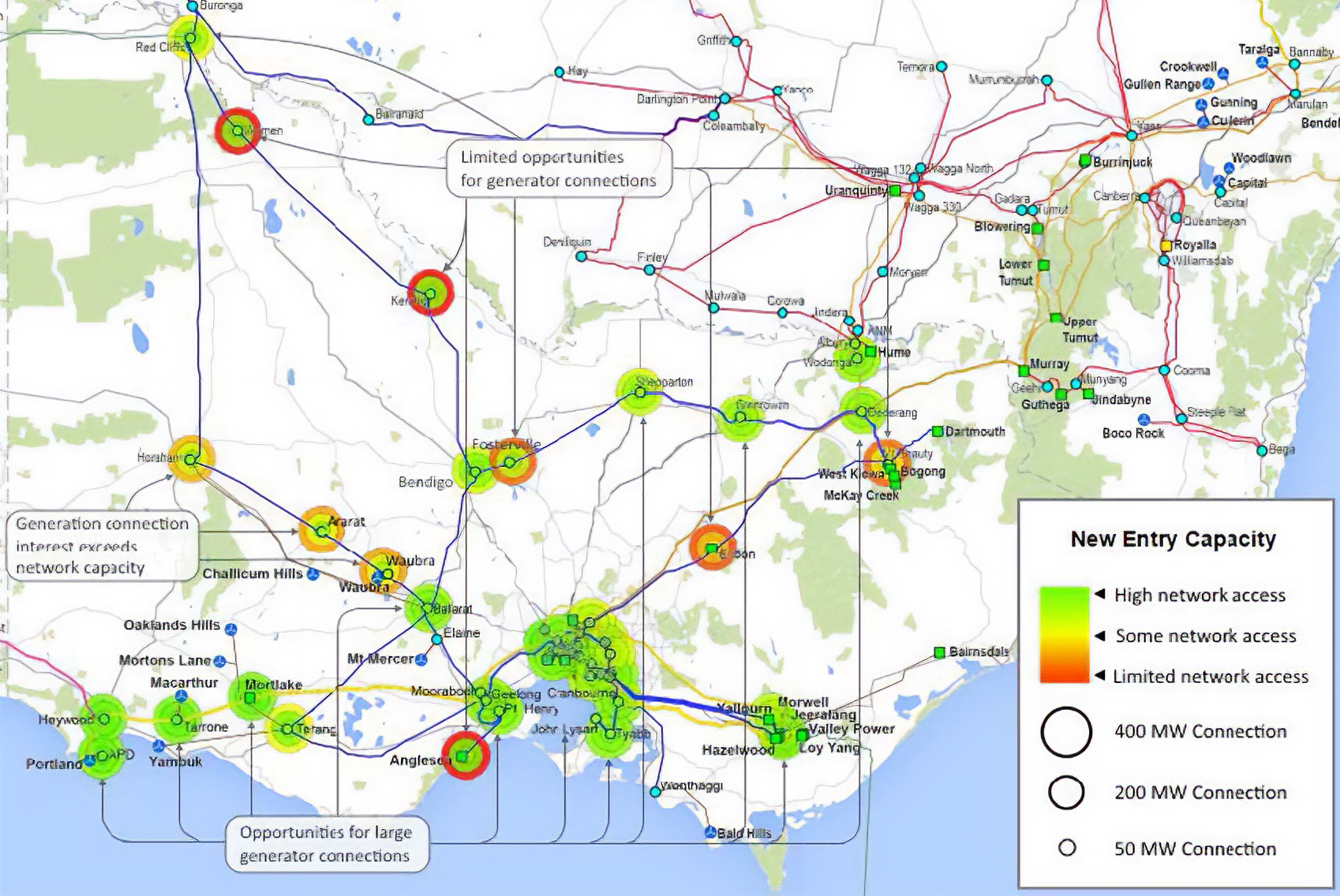Electrical networks aren't perfect, and in many areas of Melbourne, they lack the desired output to sustain many businesses and individuals. The transition to high-density living can leave many locations without an adequate electricity supply. Old industrial spaces like Port Melbourne and Southbank, which were essentially warehouse and storage areas for Melbourne, are now, thanks to urban renewal, energy-hungry hubs of residential and commercial activity.
For example, the development of Fishermans Bend in Melbourne is predicted to double the size of central Melbourne over the next 40 years, in an area that is currently network-constrained. These sudden changes bring with them new kinds of users, those who usually require or want more power than was ever previously expected from the area. In instances such as these, the amount of power available from the existing network is constrained.
 Generation connection opportunities and risks in Victoria (Source: AEMO)
Generation connection opportunities and risks in Victoria (Source: AEMO)
Why don't networks just expand into these areas? When companies are trying to expand, sometimes the network simply isn't planning to invest in the network at that stage; for example, in rural parts of Australia like Northern Victoria or parts of NSW, where potentially there isn't a good business case to expand capacity. It's not that there's not enough generation down the line, it is just simply that the parts aren't big enough or there are not enough electrical substations or transformers and that's where the issue starts.
As utilities have been incentivized to spend less, the consumer ends up paying for it, and it's creating a vacuum in the market for people who need additional electricity. Some firms may choose to have the network expand at their own cost, but these businesses might be at the end of a long transmission line as it's simply not economical for the network to do it themselves. In this case, the company might choose to pay for the upgrade, but the network still owns the asset; you're essentially paying for someone else's expansion.
Depending on where you are in the world, there will be some generators that produce power, transmission companies that bring this energy to the distribution companies and finally the environmental charges along the way. If your business has a piece of power generation on your property, like a co or trigeneration microturbine, you'll avoid the transmission and distribution changes and also much of the environmental changes - essentially, you'll just be paying for the power you generate.
